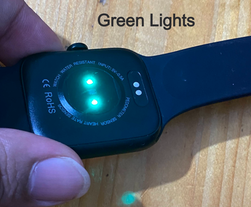How to increase the life of mobile phone batteries?
- Subir Biswas

- Jul 29, 2021
- 4 min read
The battery is the most crucial part of any mobile device as you can't carry the power station with you everywhere.
But if you are able to do you keep your device always in charge?
Is it good for the battery life?
What is the maximum level of charge that is good for batteries?
What should be the minimum level?
How to increase the life of mobile phone batteries?
Too many questions. Now is the time for an answer.
Recently few studies from the tech giants (Apple, Google, Microsoft) came with new studies which are showing a good improvement in battery life and this even can be better.
What causes Li-ion batteries to age?
The lithium-ion battery works on ion movement between the positive and negative electrodes. In theory, such a mechanism should work forever, but cycling elevated temperature, and aging decrease the performance over time. However, in general, the service life of a battery is specified in a number of cycles. Lithium- and nickel-based batteries deliver between 300 and 500 full discharge/charge cycles before the capacity drops below 80%. The performance of a battery is measured in terms of capacity, a leading health indicator. Internal resistance and self-discharge also play roles, but these are less significant in predicting the end of battery life with modern Li-ion.
According to Battery University "A fully charged Li-ion kept at 40°C (104°F) loses about 35% of its capacity in a year without being used."
Discharge Cycle:
The depth of discharge (DoD) determines the cycle count of the battery. The smaller the discharge (low DoD), the longer the battery will last. If at all possible, avoid full discharges and charge the battery more often between uses. Partial discharge on Li-ion is fine.
According to Battery University "A partial discharge reduces stress and prolongs battery life, so does a partial charge. Elevated temperature and high currents also affect cycle life."
Battery Heat:
Lithium-ion suffers from stress when exposed to heat, so does keeping a cell at a high charge voltage. A battery dwelling above 35°C (95°F) is considered elevated temperature and for most Li-ion a voltage above 4.10V/cell is deemed as high voltage. Exposing the battery to high temperature and dwelling in a full state of charge (SOC) for an extended time can be more stressful than cycling.
According to Battery University "Elevated temperature hastens permanent capacity loss."
Charging Voltage:
Most Li-ions charge to 4.20V/cell and every reduction in peak charge voltage of 0.10V/cell is said to double the cycle life. For example, a lithium-ion cell charged to 4.20V/cell typically delivers 300–500 cycles. If charged to only 4.10V/cell, the life can be prolonged to 600–1,000 cycles; 4.0V/cell should deliver 1,200–2,000 and 3.90V/cell should provide 2,400–4,000 cycles.
On the negative side, a lower peak charge voltage reduces the capacity the battery stores. As a simple guideline, every 70mV reduction in charge voltage lowers the overall capacity by 10 percent. Applying the peak charge voltage on a subsequent charge will restore the full capacity.
In terms of longevity, the optimal charge voltage is 3.92V/cell. Battery experts believe that this threshold eliminates all voltage-related stresses; going lower may not gain further benefits but induce other symptoms.
According to Battery University "Every 0.10V drop below 4.20V/cell doubles the cycle but holds less capacity. Raising the voltage above 4.20V/cell would shorten the life. The readings reflect regular Li-ion charging to 4.20V/cell. Every 70mV drop in charge voltage lowers the usable capacity by about 10%."
Dynamic Stress:
Dynamic stress tests (DST) reflecting capacity loss when cycling Li-ion at various charge and discharge bandwidths. The largest capacity loss occurs when discharging a fully charged Li-ion to 25% of SoC (black line in the graph); the loss would be higher if fully discharged. Cycling between 85 and 25 percent (green line in the graph) provides a longer service life than charging to 100 percent and discharging to 50 percent (dark blue). The smallest capacity loss is attained by charging Li-ion to 75 percent and discharging to 65 percent. This, however, does not fully utilize the battery.
According to Battery University, "Charging and discharging Li-ion only partially prolongs battery life but reduces utilisation."
Tips for the user to increase/prolong the battery life:
Environmental conditions, not cycling alone, govern the longevity of lithium-ion batteries. The worst situation is keeping a fully charged battery at elevated temperatures. Battery packs do not die suddenly, but the runtime gradually shortens as the capacity fades.
Follow the below to increase/prolong the battery life:
Lower charge voltages, mean don't change fully. Mostly try to charge till Constant current stage or a little bit higher.
Try to use the phone in cooler areas. If for any reason temperature goes high try to be in a compatibility cooler place.
Try to control the SOC between 25% to 85%. This is the moderate range with the balance between utilisation and battery health.
Recently few phone manufacturers said the same strategy to increase the life of the battery.
Apple iPhone:
With iOS 13 and later, "Optimised Battery Charging" is designed to reduce the wear on your battery and improve its lifespan by reducing the time your iPhone spends fully charged. When the feature is enabled, your iPhone will delay charging past 80% in certain situations.
Google Pixel:
The new behavior “Optimizing for battery health” sets Pixel devices to charge only to 80% before capping the battery charge. The feature has been rolled out to Pixel 3 and newer devices and seems to have been made available around April of this year, according to user reports discovered by XDA. It seems to work both on Android 11 and Android 12.




























Comments